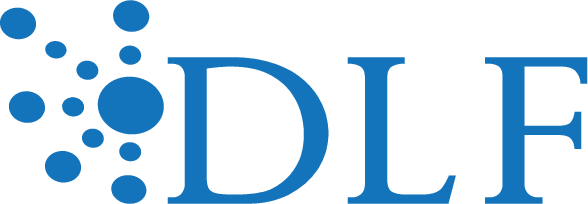
I was so pleased to be selected as the first Visual Resources Association (VRA) + DLF Cross-Pollinator Fellow, and to have the opportunity to attend the 2015 DLF Forum. In my position as a visual resources librarian, I both provide traditional visual resources support to the MIT community and work with a locally-managed, globally-accessible digital library, so the intersection of these two worlds is of particular interest to me.
As someone whose professional development experience has to this point taken place primarily in the area of visual resources, I was excited for the opportunity to explore a new realm. The Forum emphasized to me something I was already beginning to see play out in my own position and across the field of visual resources: the line between visual resources professional and digital library practitioner is[pullquote1 align=”right”]The line between visual resources professional and digital library practitioner is becoming increasingly blurry, and this is indeed a positive step for the profession.[/pullquote1] becoming increasingly blurry, and this is indeed a positive step for the profession.
Beyond this realization, the Forum was thought-provoking in a variety of ways, from high-level professional and ethical ideas, to nitty-gritty details of specific projects. In her keynote, Safiya Umoja Noble began the conference with an exploration of her research into search algorithms, biases, and results. For me, this specifically raised questions of the way we (both the broad “we” across the profession, and the “we” made up of me and my colleagues at my institution) are cataloging and making available material in our image collections and digital libraries. For visual material especially, the only access points are typically those that we, human beings, have added. As Dr. Noble’s talk illustrated, everyone is operating with implicit (or explicit) biases, values, beliefs, and despite our best efforts, our metadata is not neutral. This is something I’d like to keep more in the forefront of my mind going forward, both when cataloging content and in framing how I explain search strategies and results to users.
I particularly enjoyed the various snapshot sessions throughout the conference, as they provided digestible glimpses, introductions, and summaries of projects and topics in a broad range of areas. In these snapshots I found a variety of subjects of interest and relevance to my work, such as digital projects workflows, meaningless/dirty metadata, controlled vocabularies, and user engagement with digital collections.
The snapshots and other sessions also introduced a variety of ideas that were largely new to me. For example, I was particularly interested to learn about the International Image Interoperability Framework (IIIF). This was a topic I was generally unfamiliar with before the Forum, and while I still haven’t wrapped my mind fully around the idea or how it could someday influence my work, this to me was representative of the kinds of things I hoped to get out of the Forum, and why involvement with DLF makes sense for those in VRA: IIIF takes a subject we are all familiar with and passionate about – images – and takes it a step further, truly harnessing the potential of digital libraries to make it more powerful and accessible to users.
I’m enormously grateful to the Visual Resources Association and to DLF for this opportunity, and to all the organizers, presenters, and attendees at the Forum for all that I learned. Thank you! The DLF community was engaging and incredibly welcoming to me and all of the other first-time attendees, and I’m eager to see future communication and collaboration between DLF and VRA.
